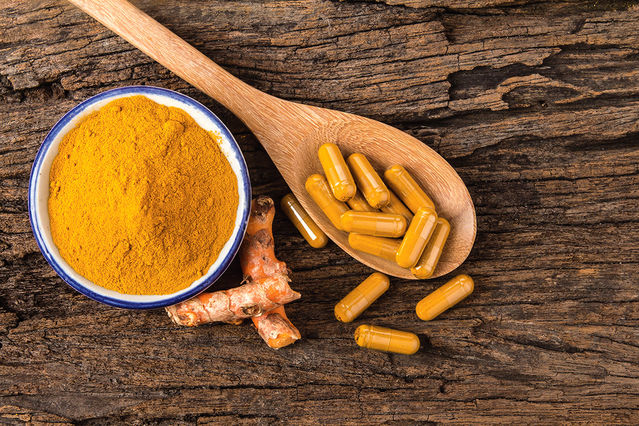Nature Knows and Psionic Success
God provides
Cognified Fitness

One of the next big trends in fitness is combined physical-cognitive training. Older adults in the United States and abroad are concerned about staying mentally sharp and avoiding dementia as they age, while younger populations are eager to get an “edge” on their competitors (sports or business) and are now more aware than ever of the benefits of training their minds as well as their bodies. Others just want to be able to “gamify” their exercise programming to make it more fun and engaging. Here are just a few fun low-tech ways to start introducing cognitive load into your exercise programs. Dual-tasking Dual-tasking occurs when a person is asked to perform a physical activity and an unrelated cognitive task at the same time. For example, walking while counting backwards by 7s; performing repetitions of a resistance exercise while naming words that start with the letter “F”; or solving basic math problems while riding a stationary bike. During these activities, the brain is being nourished with blood, oxygen, glucose and other positive neurotrophins that can enhance cognitive performance. Several studies show that dual-tasking can improve cognitive performance in some populations, even when cognitive tasks are performed following aerobic exercise (Karssemeijer et al., 2017; Bamidis et al., 2014). However, a key element seems to be that the exercise must be performed at a moderate-to-vigorous intensity. Exercise Flow Drill There are many different aspects to memory including immediate and delayed recall, which can be challenged by giving a sequence of movements or tasks that the individual must perform in the same manner and in the same order. The movements can be demonstrated without verbal cueing or can be verbally described, or both. A series may include three to eight movements, which can be given all at once or built upon the previous […]
Nootropics: Know the whats, the whys and the hows of this substance
Would you believe if someone tells you that there is a pill that can improve your intelligence? The proposition can look attractive but at the same time, a too far-fetched also. Plenty of research work is going around this as pharmacy companies endeavor to make nootropic pills, supplements, and other forms of drugs to help enhance your cognitive power . The origin of the word ‘nootropic’ is rooted in the Greek etymology. It means “to shape or bend the mind.” These drugs are over-the-counter products available both online and offline. People are opting for them, trusting these would increase their memory, productivity, intelligence, and decision-making. So, are you also planning to join the masses? Whether you desire to curb aging-related cognitive impairment, to bolster your attention and creativity, or to deal with the daily stress of urban lifestyle, you can consider giving a try to nootropics. But before that, make sure to read different aspects of this drug so that you can take a smart decision for yourself. Photo by Elliot L’Angelier on Unsplash Meaning of Nootropics Having originated from the Greek words “noos” and “trepin,” which mean “mind” and “to bend,” respectively, nootropics are known for their ability to better cognitive powers, focus, learning skills, and memory of the human beings. The term came to use for the first time by Dr. Corneliu Giurgea (A Romanian doctor) in the era of 1970s. It was during this time a mind-shaping medicine called piracetam entered the market for its effectiveness in memory improvement. Impact of nootropics on brain health A slew of studies shows the effect of this substance in your body that eventually contributes to the improvement of your mental health. See how this drug works. Boosts your brain energy by producing cellular energy either through stimulation or energy […]
Dwell on the Positive
Have you ever wondered why newspapers are so full of bad news? Or why people often spend so much more time fretting about what’s wrong in their lives instead of appreciating what’s going right? Why do painful experiences take up so much real estate in our memory? And why are they so much easier to recall than pleasurable ones? Why do we often feel that it is our negative experiences that define us rather than our positive ones? Scientists have coined the term “negativity bias” to describe this phenomenon of how human consciousness relates to the world. Essentially, our negativity bias ensures that experiences of a more negative nature have a greater effect on our psychological state and consequent behavior than neutral or positive ones, even when they are of equal intensity. According to neuroscientists, our brains have developed specialized circuits that register negative experiences immediately in emotional memory so that we can learn from them. On the other hand, most positive experiences flow through the brain like water through a sieve; we experience them, enjoy them, and quickly forget them. Accordingly, we use much more brain space to scan and process negative experiences than positive ones, because negative stimuli, if not registered and responded to appropriately, can be fatal. Out of necessity, we have become masters of fixating on the negative aspects of our lives and environments. This is only natural. This negativity bias is what allows us to remain vigilant in our efforts to register and respond to any potential dangers and imminent threats to our well-being—ideally, before it is too late. The problem is that this negativity bias has a side effect. Since we are always on high alert for potential dangers, the positive aspects of our lives tend to get less attention. When we receive […]
The Yogen Früz Brain Project encourages Canadians to get a “head start” on brain health

TORONTO, July 03, 2019 (GLOBE NEWSWIRE) — The Yogen Früz Brain Project returns for a fourth year with a vigorous campaign to raise brain health awareness and advance groundbreaking research on aging and dementia. 50 brains displayed in the pond at Nathan Phillips Square With the generous support of this year’s title sponsor, Yogen Früz, The Baycrest Foundation is teaming up with local and international artists and celebrities to launch this year’s Yogen Früz Brain Project and transform 50 blank brains into thought-provoking pieces of art. The initiative is encouraging Canadians to get a "head start" on brain health from a young age. Dementia is a public health concern worldwide. In Canada, more than 564,000 individuals are currently living with Alzheimer’s or other forms of dementia. Despite popular belief, dementia is not a natural or inevitable consequence of aging and there are many ways to help reduce the risk of cognitive decline. Baycrest scientists are leading research on early detection for dementia. In fact, new research by the University of Arizona and Baycrest’s Rotman Research Institute has found what could be an early detection method for some forms of dementia. The study, recently published in the journal Neuropsychologia , found that patients with a rare neurodegenerative brain disorder called primary progressive aphasia, or PPA, show brain function abnormalities in areas that look structurally normal on an MRI scan. "If we can delay the onset of dementia by five years, we could reduce its prevalence in the population by about one third – that is a significant number," said Josh Cooper, President and CEO of The Baycrest Foundation. "The Yogen Früz Brain Project challenges Canadians of all ages to learn what they can do now to delay the onset of dementia as they age. Meanwhile, the funds raised through this […]
Herbal remedies from traditional Chinese medicine found to effectively treat Alzheimer’s disease

( Natural News ) In a review published in The American Journal of Chinese Medicine , researchers from China looked at the potential of Chinese herbal medicines on the treatment of Alzheimer’s disease and dementia. They found that certain components from Chinese herbal medicines may be used as a natural, safe, cost-effective treatment for Alzheimer’s disease . Alzheimer’s disease is the most common form of dementia known to destroy memory and other cognitive functions. This condition not only severely reduces the quality of life for its victims but also brings a heavy economic burden to the family and society. Conventional treatments for the condition are often ineffective and have serious side effects. Therefore, there is an urgent need for new strategies to be developed for Alzheimer’s disease treatment. In the review, the researchers examined studies on the active components of Chinese herbal medicines and their therapeutic effects on Alzheimer’s disease. One of the active compounds reviewed was ginsenoside Rg1, which is extracted from ginseng root ( Radix Ginseng ). It helps treat Alzheimer’s disease by exerting a gamma-secretase inhibitor effect that reduces amyloid-beta aggregation, which plays a role in Alzheimer’s disease development. It can also inhibit the programmed cell death of nerve cells. A compound derived from the red sage root ( Radix Salviae miltiorrhizae ) called tanshinone IIA, and baicalin, which is extracted from the root of the Chinese skullcap ( Radix Scutellariae ), were found to inhibit the oxidative stress injury in nerve cells. The power of the elements : Discover Colloidal Silver Mouthwash with quality, natural ingredients like Sangre de Drago sap, black walnut hulls, menthol crystals and more. Zero artificial sweeteners, colors or alcohol. Learn more at the Health Ranger Store and help support this news site. Researchers also found that icariin, which is extracted […]
Herbal Remedies From Traditional Chinese Medicine Found To Effectively Treat Alzheimer’s Disease
Health NaturalNews In a review published in The American Journal of Chinese Medicine, researchers from China looked at the potential of Chinese herbal medicines on the treatment of Alzheimer’s disease and dementia. They found that certain components from Chinese herbal medicines may be used as a natural, safe, cost-effective treatment for Alzheimer’s disease. Alzheimer’s disease is the most common form of dementia known to destroy memory and other cognitive functions. This condition not only severely reduces the quality of life for its victims but also brings a heavy economic burden to the family and society. Conventional treatments for the condition are often ineffective and have serious side effects. Therefore, there is an urgent need for new strategies to be developed for Alzheimer’s disease treatment. In the review, the researchers examined studies on the active components of Chinese herbal medicines and their therapeutic effects on Alzheimer’s disease. One of the active compounds reviewed was ginsenoside Rg1, which is extracted from ginseng root (Radix Ginseng). It helps treat Alzheimer’s disease by exerting a gamma-secretase inhibitor effect that reduces amyloid-beta aggregation, which plays a role in Alzheimer’s disease development. It can also inhibit the programmed cell death of nerve cells. A compound derived from the red sage root (Radix Salviae miltiorrhizae) called tanshinone IIA, and baicalin, which is extracted from the root of the Chinese skullcap (Radix Scutellariae), were found to inhibit the oxidative stress injury in nerve cells. Researchers also found that icariin, which is extracted from barrenwort (Epimedium brevicornum), can reduce amyloid beta levels and the hyperphosphorylation of tau protein. It can also inhibit oxidative stress and programmed cell death. In addition, a compound derived from toothed clubmoss (Huperzia serrata) called huperzine A was found to exhibit a cholinesterase-inhibitor effect. Active components evodiamine, extracted from evodia fruit (Fructus Evodiae), and […]
How hangovers REALLY impair your brain: Study in an Irish pub reveals adults have worse memory, slower reaction times and are less alert if they were drunk the day before

Hangovers really do make you less alert, impair your memory and slow down your reaction times, scientists have confirmed. Until now, studies on hangovers have been restricted to just alcohol -fuelled students who drink regularly. But researchers wanted to examine how drinking the night before affects the mental capacity of the general population. So, in the name of science, dozens of participants getting drunk in a pub in the afternoon were asked to complete brain tests the next day. Researchers at the University of Ulster conducted the ‘naturalistic’ study in a pub in a town in Ireland that they did not name. Until now, studies on the effects of a hangover have been restricted to just alcohol-fuelled students who drink more frequently Until now, studies on the effects of a hangover have been restricted to just alcohol-fuelled students who drink more frequently They did, however, reveal it had a population of 6,839 in the 2011 Census – the same amount of people recorded living in Buncrana, County Donegal. The academics hung around in the unidentified pub from the time it opened – 10.30am – until 3pm to recruit 43 people to take part. Anyone generous enough to offer their services had to volunteer for the day because there was no financial incentive for them to take part. Before taking part in the study participants were screened in an office above the pub and disqualified if they had a head injury, were taking medication, were pregnant or had in the past been treated for drug or alcohol addiction. The NHS recommends that adults drink no more than 14 units each week — that’s 14 single shots of spirit or six pints of beer or a bottle and a half of wine The NHS recommends that adults drink no more than […]
Nutrition Tips to Support Healthy Brain Development Throughout Childhood

Healthy brain development starts early and continues throughout childhood. A healthy brain influences how well kids learn, pay attention, control impulses , anticipate, plan and make decisions. It also impacts their social-emotional skills , mood and mental health. According to a 2016 Journal of Pediatrics article on the role of nutrition in brain development , the structural and intellectual capacity of the brain is mostly established by age 3. In infancy, the brain’s framework and "information highway" is established. While babies can’t talk or read, they learn from observation, connecting with caretakers and their environment. This process continues in the toddler years, resulting in the emergence of language, social skills and learning through play. Best Way To Lose Abdominal Weight Keto Diet Meal Plans In childhood, formal learning, executive skills like planning ahead and decision-making abilities emerge. While brain growth and development still happen in adolescence, a shift occurs. The brain begins to prune itself, removing underutilized neurons and information pathways so more important ones can flourish. Brain development in young children is influenced by many things, but experts focus on three key areas: exposure, experiences and nutrition. Exposure to toxins like lead , as well as infection, stress and trauma can have long-term repercussions on brain development. Likewise, positive or negative experiences can also influence brain development. For example, neglect or abuse can have devastating, lasting effects, while playing with a child or reading stories together are beneficial for brain development. The third key to a healthy brain is nutrition. Nutrients for Healthy Brain Development Many nutrients are needed for normal, healthy brain development, including protein and fat, and micronutrients such as the omega-3 fatty acid DHA , choline, iron and zinc. The goal is to ensure nutritional needs are met. Young brains are more vulnerable to the […]
A Nimble Nutrient

Shutterstock One thing that enables the nutrients in foods to be so important to health is the power of repetition. For example, numerous phytochemicals exist in many fruits and vegetables, and consumed daily, even in small amounts, they can provide an outsize benefit to the mind and body. You’ve probably heard of carotenes, linked to eye health, and resveratrol, thought to be important for longevity. Consider curcumin, the vivid yellow-orange substance that gives the root turmeric its distinctive color. A member of the ginger family, turmeric has long been a staple of Indian culture, consumed in curries or prescribed as a natural remedy. Turmeric contains just 3 to 5 percent curcumin, but even such a low concentration of the nutrient, consumed regularly, can address ailments from inflammation and depression to cancer and dementia . Curcumin is a polyphenol, one of a group of chemicals that occur naturally in plants to ward off disease or destruction—from insects or solar radiation—and aid recovery from such threats. Consumed in foods, polyphenols remain bioactive, delivering similar perks to their new human hosts. Although curcumin has long been used in traditional medicines, recent clinical trials have given it the stamp of scientific approval. Studies show that curcumin stimulates the release of proteins called cytokines that calm and heal inflammation. Chronic inflammation plays a role in many illnesses, including cardiovascular disease, diabetes, obesity , dementia, and depression. “There’s a lot of evidence that people with depression have greater levels of inflammation and oxidative stress ,” says psychologist Adrian Lopresti, a senior researcher at Murdoch University in Australia who has conducted clinical trials of curcumin as a treatment for depression. “That may be how curcumin works to improve mental health.” Studies show that curcumin also guards the aging brain, shielding against cognitive decline and protecting against […]
Health Benefits of Marijuana Tea (CBD Oil For Sleep)

Most people who use marijuana for its recreational and/or medicinal properties consume it via the traditional ways – smoking, vaping, or eating it in the form of edibles. nowadays, it’s also more common to consume marijuana through CBD oil for insomnia and other purposes. While marijuana tea is a lot less common, it’s a much healthier alternative to smoking, and brings other unique benefits as we’ll describe in this post. What is Marijuana Tea? Marijuana tea is made from the cannabis plant, and its key benefits are derived from THC (Tetrahydrocannabinol) content in the plant. THC ideally binds to the pain receptors in the brain, which makes it a natural pain reliever, and offers other therapeutic benefits. Plus, marijuana tea lets you enjoy your marijuana without the known risks associated with smoking it. It is therefore a perfect solution for patients who suffer from conditions that affect their throat, lungs, mouth, or have other respiratory problems. It can also enhance the effect of CBD Oil for sleep and other conditions. Taking a quick look at the historical profile of marijuana tea, it’s quite evident that this is far from an invention. A number of ancient cultures would consume brews infused with marijuana for the anti-inflammatory and anesthetic properties. Marijuana tea was used as a treatment for all kinds of conditions, including epilepsy, and during childbirth to offer relief from headaches and nausea. Benefits of Marijuana Tea 1. Pain relief Marijuana is a known powerful analgesic and has been in use for centuries to treat painful conditions like muscle pains, arthritis, and other chronic illnesses. The active compounds in cannabis have been shown to bind to various receptors in the central nervous system where they can block pain effectively. The good thing about how cannabis works to relieve pain is […]
Can social interaction predict cognitive decline?

A recent study concludes that social interaction might be more than just a pleasant pastime; it might help doctors predict an individual’s risk of cognitive decline and, perhaps, dementia. How does social interaction influence cognitive decline? Cognitive decline refers to a general reduction in mental abilities over time. It affects many people as they age and, in some cases, can lead to dementia . As the average age of the population rises, an increasing number of people are likely to experience cognitive decline. A group of researchers from Brigham and Women’s Hospital in Boston, MA, are interested in the potential role that social interaction might play. Specifically, their most recent study looked at whether there is an interaction between levels of social activity, cognitive performance, and the amount of beta-amyloid in the brain, which is a neurological hallmark of Alzheimer’s disease . Cognitive decline and sociability To investigate, the scientists followed 217 older adults involved in the Harvard Aging Brain Study . At the beginning of the study, participants were aged 63–89 and showed no cognitive deficits. The authors followed the group for 3 years. Each participant completed a questionnaire that ascertained their levels of social interaction; this included meeting family and friends, religious activities, and volunteer work. The researchers also measured levels of beta-amyloid in each participant’s brain. As expected, there was significant variability, with some people having much higher levels, putting them at increased risk of developing Alzheimer’s. The authors published their findings in The American Journal of Geriatric Psychiatry . Although earlier studies have shown a relationship between social engagement and cognitive decline, scientists have not fleshed out the relationship between these two factors and levels of beta-amyloid in the brain. A complex picture emerges Overall, the authors found no relationship between social interaction and cognitive […]
What to Feed Your Child to Support Healthy Brain Development
Healthy brain development starts early and continues throughout childhood. A healthy brain influences how well kids learn, pay attention, control impulses , anticipate, plan and make decisions. It also impacts their social-emotional skills , mood and mental health. According to a 2016 Journal of Pediatrics article on the role of nutrition in brain development , the structural and intellectual capacity of the brain is mostly established by age 3. In infancy, the brain’s framework and "information highway" is established. While babies can’t talk or read, they learn from observation, connecting with caretakers and their environment. This process continues in the toddler years, resulting in the emergence of language, social skills and learning through play. In childhood, formal learning, executive skills like planning ahead and decision-making abilities emerge. While brain growth and development still happen in adolescence, a shift occurs. The brain begins to prune itself, removing underutilized neurons and information pathways so more important ones can flourish. Brain development in young children is influenced by many things, but experts focus on three key areas: exposure, experiences and nutrition. Exposure to toxins like lead , as well as infection, stress and trauma can have long-term repercussions on brain development. Likewise, positive or negative experiences can also influence brain development. For example, neglect or abuse can have devastating, lasting effects, while playing with a child or reading stories together are beneficial for brain development. The third key to a healthy brain is nutrition. Nutrients for Healthy Brain Development Many nutrients are needed for normal, healthy brain development, including protein and fat, and micronutrients such as the omega-3 fatty acid DHA , choline, iron and zinc. The goal is to ensure nutritional needs are met. Young brains are more vulnerable to the impact of a nutrient deficiency than older brains. In fact, […]
Bee smarts: Scientists discover the insects can do basic math

( Natural News ) Animals are able to understand and use numbers on a rudimentary level. They apply this understanding to important tasks, such as foraging and managing resources, which ensure their survival. So far, only humans and a few animal species have demonstrated the ability to do complex arithmetic operations. But a new study conducted by researchers from France and Australia show that honeybees can also do math. In their paper published in the journal Science Advances , they reported that honeybees can learn to use colors as symbolic representations for addition and subtraction . Bees can be trained to understand numbers and numerical concepts According to Adrian Dyer, one of the authors and a professor at RMIT University in Australia, two levels of processing are required to perform numerical operations like addition and subtraction. A person normally makes use of long-term memory to apply the rules for adding and subtracting while mentally manipulating numbers in his or her short-term memory. The brains of most animals are not equipped for these functions, hence they are considered complex operations. While most people won’t think of bees as capable of these, studies show that they have the ability to learn complex rules and concepts . In fact, despite their small brain, bees in nature regularly process information that helps them solve problems involving the addition or subtraction of one element from a group of elements. Over the years, researchers have learned that bees can be trained to perform difficult tasks like counting and discriminating numbers using a reward-punishment approach. Numerical cognition is said to require a more sophisticated level of processing. Support our mission and enhance your own self-reliance : The laboratory-verified Organic Emergency Survival Bucket provides certified organic, high-nutrition storable food for emergency preparedness. Completely free of corn syrup, […]
Baicalein from Chinese skullcap found to protect the brain against glutamate excitotoxicity

( Natural News ) In this study, researchers from Taiwan investigated the effects of baicalein on glutamate release and glutamate neurotoxicity in the hippocampus of rats. The results of their research were published in The American Journal of Chinese Medicine . Interest in the health benefits of flavonoids, particularly their effects on neurodegenerative disease, is increasing. Baicalein, which was used in this study, is a flavonoid compound isolated from the traditional Chinese medicine Scutellaria baicalensis. The researchers found that baicalein inhibits depolarization-induced glutamate release in the rat hippocampal nerve terminals (synaptosomes). On the other hand, this phenomenon is prevented by chelating the extracellular Ca2+ ions and blocking presynaptic Cav2.2 (N-type) and Cav2.1 (P/Q-type) channel activity. After performing whole cell patch-clamp experiments, the researchers reported that baicalein reduced the frequency of miniature excitatory postsynaptic currents without affecting their amplitude. In a kainic acid rat model, intraperitoneally administering baicalein to rats before intraperitoneal injection of kainic acid substantially attenuated kainic acid-induced neuronal cell death, c-Fos expression, and the activation of the mammalian target of rapamycin in the hippocampus. The researchers noted that their study is the first to demonstrate the ability of baicalein to inhibit glutamate release from hippocampal nerve terminals and protect against kainic acid-induced excitotoxicity in vivo. Based on their findings, the researchers concluded that the biological activity of baicalein in the brain makes it a valuable natural compound that can be used to treat brain disorders related to glutamate excitotoxicity. Journal Reference: Chang Y, Lu CW, Lin TY, Huang SK, Wang SJ. BAICALEIN, A CONSTITUENT OF SCUTELLARIA BAICALENSIS, REDUCES GLUTAMATE RELEASE AND PROTECTS NEURONAL CELL AGAINST KAINIC ACID-INDUCED EXCITOTOXICITY IN RATS. The American Journal of Chinese Medicine. 2016;44(05):943–962. DOI: 10.1142/s0192415x1650052x
Happening at the Bryant Library

Mark your calendars The Alexander Technique: Presentation by Gary Adelman; Thursday, July 18 at 1 p.m.: Learn how to improve posture, reduce pain, de-stress, look and feel better and younger with certified Alexander technique teacher, Gary Adelman. Gary has had a private practice in Alexander technique for over 25 years. He has studied the technique in Boston and Tel Aviv and taught its methods for a year at Princeton University. Online registration required. Family Magic Show & Tell: Performance & Magic Lesson by Evan Kirsh; Saturday, July 20 at 3 p.m.: Have you ever seen a magician at a party or on TV? Are you interested in witnessing the impossible right in front of your eyes? Evan Kirsh is a 20 year old magician who performs for audiences of all ages. A student at the University of Virginia, Evan started performing magic at the age of 7. Adults and children alike are amazed at his feats of mentalism, card tricks, and stage magic. He makes sure to have audience members frequently star in the show, providing an exciting, hands-on experience for all. Registration required. All ages welcome. Online registration required. Understanding Alzheimer’s & Dementia – Sponsored by the Alzheimer’s Association; Tuesday, July 23 at 1 p.m.: Alzheimer’s is not a regular part of aging. It’s a disease of the brain that causes problems with memory, thinking, and behavior. Join to learn about the impact of Alzheimer’s, the difference between Alzheimer’s and dementia, disease stages and risk factors, current research and treatments available to address symptoms, and Alzheimer’s Associations resources. Online registration required. Celery Juice: The Elixir of Life: Thursday, July 25 at 1:00 p.m.: Some believe that drinking celery juice regularly could be one of the most powerful natural medicines of our time. Join this informative lecture to find […]
The science behind sniffing

Aromatherapy can help heal, at least that’s what the industry wants you to believe Story: noko In Ecce Homo: How One Becomes What One Is, philosopher Friedrich Nietzsche hails his sense of smell by quoting "my genius is in my nostrils". Most people though overlook their olfactory perception and the use of "healing" scents. A modern approach to age-old aromatherapy, however, is driving one of this year’s biggest trends, according to a report released at the Global Wellness Summit (GWS) held in New York, earlier this year. Technology, fragrance development and neuroscience studies along with evidence-based research have led to what the GWS defines as MediScent that promotes physical and emotional well-being. Based in Cleveland Clinic’s Innovations Lab, Aeroscena has for almost a decade been on a mission to make aromatherapy a viable clinical treatment. The company’s blends of essential oils, termed phyto-inhalants, specifically treat health symptoms, such as pain, nausea and anxiety, with back up by clinical trials. The Ascents by Aeroscena even include an appetite suppressant based on a grapefruit and peppermint aromatherapy. The science behind the blend — sniffing limonene — helps control cravings. Below Neom Organics’ Wellbeing Pod is designed to deliver the right amount of scent and switch essential oil blends. photo: Global Wellness Summit Inhaling essential oils stimulates the olfactory system, with their molecules affecting the brain’s limbic system, linked to breathing, heart rate, blood pressure, hormonal balance as well as emotions, memory and stress. The resulting holistic effect addresses the needs of today’s consumers, who look for natural solutions. The popularity of essential oils in the home has spurred advances in diffuser technology. London-based Neom Organics designed its Wellbeing Pod to deliver the right amount of scent, allowing users to switch essential oil blends at the touch of a button for better […]
CLAIM: Smart phone use begins to physically alter living human beings, growing bone spurs on the back of their skulls

( Natural News ) Smart phones are altering how humans think, how they behave, and how they communicate. These devices are also physically changing the human skull . Researchers have identified the evolution of bone spikes on the human skull. These bone layers are showing up on the back of the skulls of people who routinely crane their neck to use their Smart phone. Human evolution is entering a new era, an era where people are constantly bombarded by information. Accessible information and communication is changing how the human brain works. Constantly distracted by the Smart phone, humans have become dependent on and controlled by this handheld portal. Smart phone use disrupts day-to-day interactions, causing disconnection between friends and family members in real life. The brain has also become addicted to multiple dopamine rushes throughout the day, as Smart phone users check their phone for text messages, likes, re-tweets, news updates, comments, and other trending topics. These constant distractions cause sleep disruptions, reduced attention span, and eye fatigue. When out in public, it is rare to find a human being who isn’t craning their neck to look into a screen. People are not only unaware of their surroundings most of the time, but they are also damaging the very makeup of their physical bodies. This new era of perpetual craning of the neck is causing problems with posture. It’s also causing many to be dependent on chiropractors for cervical neck and spinal adjustments. Australian researchers finding an increase in bone growths in the x-rays of millennials David Shahar, a health scientist at the University of the Sunshine Coast in Australia published a study documenting an increase in external occipital protuberance. This phenomenon can plainly be described as a lump on the back of the head. David Shahar has found […]
Lindsay Guion Explains How Different Types of Music Can Either Distract You or Boost Your Productivity

Many people turn to background music as a way to keep themselves focused on the task at hand. Students and office workers have particular concerns about which types of music will help them focus versus distracting them from their work. Lindsay Guion, Founder, Chairman, and CEO of GUION PARTNERS and Executive Publisher of Music Industry Quarterly (“MIQ”), examines the question of which types of music help with concentration and which are more likely to be distracting so you can create your playlists with productivity in mind. Scientific Background Scientists from the University of Maryland Medical Center recommends that students listen to music while they are working. They cite the beneficial effects of music on stress levels, decreasing anxiety levels, blood pressure, and heart rate. Music was also found helpful for students who are taking tests, reducing their anxiety. Researchers at the Stanford University School of Medicine studied the effect of classical music on concentration. Using functional magnetic resonance imaging or fMRI, they were able to see how music affects different parts of the brain. They found that music activates the parts of the brain that are involved with memory, attention, and making predictions of what will happen next. They discovered that activity in the right side of the brain was much stronger than on the left side of the brain while study participants were listening to music. Classical music, such as that used in the study stimulated these areas for a positive effect. The effect of popular music on concentration is less promising. In a scientific study, Mack T. Henderson found that popular music and classical music have opposite effects on concentration. Music with lyrics was associated with lower concentration because the brain tries to process the lyrics at the same time as the content of what is being […]
Facing the Privacy Costs of Biometric Identification

Thanks to massive gains in accuracy and lower costs, facial recognition is better than ever and its applications for governments are growing. But with the technology’s adoption come increased threats to personal data. U.S. Customs and Border Protection plans to use facial recognition for more than 97 percent of commercial air travelers by 2022. Flickr/US Customs/Donna Burton In 2017, the Washington County Sheriff’s Office in Hillsboro, Ore., became one of the first law enforcement agencies in the country to use Amazon’s facial recognition software program, known as Rekognition. Powered by the latest in artificial intelligence, the tool allows Washington County officers to look for matches of a suspect’s face by quickly sorting through more than 300,000 mug shots in a county database that goes back to 2001, according to a report in The Washington Post . Sheriffs have used facial recognition more than a thousand times since the program was installed more than 18 months ago, and the software has led to dozens of arrests for theft, violence and other crimes, according to the Post, but its use has also raised some red flags among privacy advocates who question its accuracy, especially for individuals with dark-skinned faces, and how the police decide to use the technology. The facial recognition market is growing rapidly ($7.76 billion value globally by 2022, according to the research firm MarketsandMarkets) as demand for surveillance, monitoring and identity grows. But as the technology becomes increasingly accurate, it could further diminish what privacy we have left, say critics. That has set off alarm bells, demands for stricter regulations and laws on how and when it should be used, and, in some cases, outright bans. Algorithms Grow Up Biometric identification technology has been around for decades. Fingerprinting became a high-tech, automated process with the development of automated […]
The Real Reason Your Boss Lacks Emotional Intelligence
Over the past century, the heartless, no-nonsense CEO has become something of an icon—and a cliché—in American society. Hollywood would have us believe that the Machiavellian chief exec is still alive and well. But that’s just TV, right? How about in the real world? Do businesses still allow these inhumane relics to survive? To find out, TalentSmart analyzed the emotional intelligence (EQ) profiles of the million-plus people in our database—workers from the frontlines to the C-suite. We discovered that the answer is yes, organizations today do promote the emotionally inept … except when they don’t. Allow me to explain. We found that EQ scores climb with titles from the bottom of the corporate ladder upward toward middle management. Middle managers stand out with the highest EQ scores in the workplace because companies tend to promote people into these positions who are level-headed and good with people. The assumption here is that a manager with a high EQ is someone for whom people will want to work. But things change drastically as you move beyond middle management. For the titles of director and above, scores descend faster than a snowboarder on a black diamond. CEOs, on average, have the lowest EQ scores in the workplace. The trick is, for every title in the graph above, the top performers are those with the highest EQ scores. Even though CEOs have the lowest EQ scores in the workplace, the best-performing CEOs are those with the highest EQs. You might get promoted with a low EQ, but you won’t outshine your high-EQ competition in your new role. The higher you go above middle management, the more companies focus on metrics to make hiring and promotion decisions. While these short-term, bottom-line indicators are important, it’s shortsighted to make someone a senior leader because of […]
